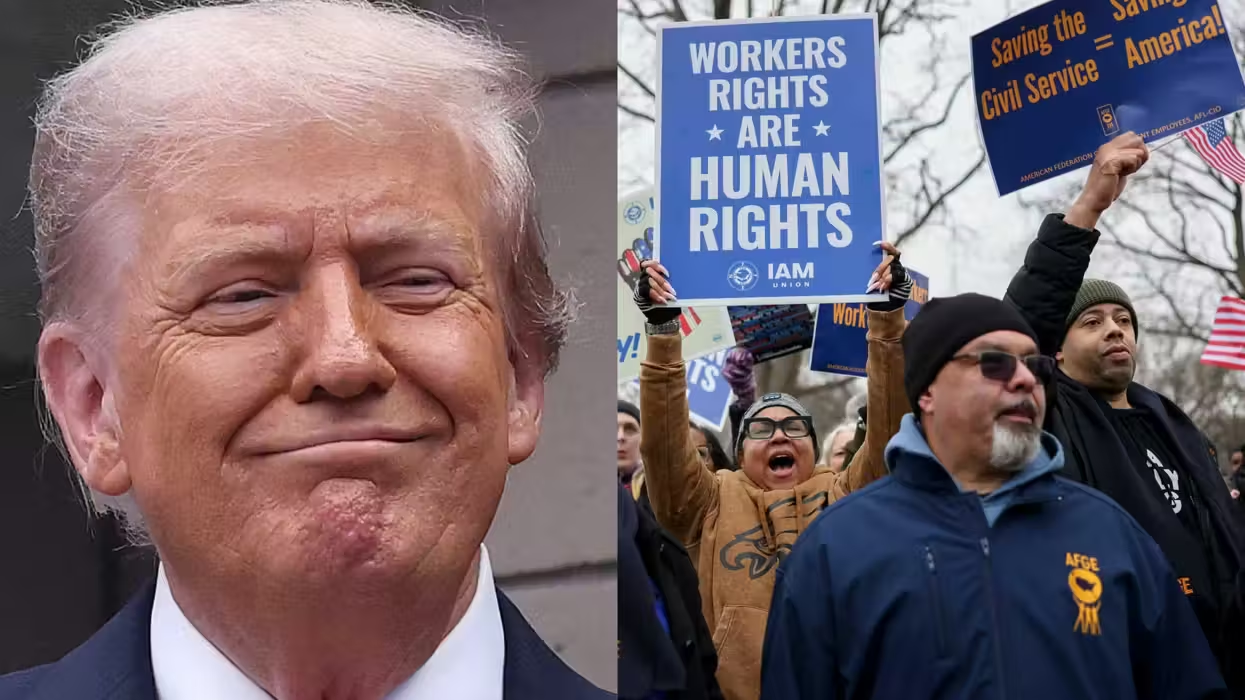
© 2025 Blaze Media LLC. All rights reserved.
America off Limits: Soviet Tourists Were Banned from Visiting These Areas During the Cold War
May 17, 2013
It's forbidden.
Very few Russians were allowed to venture outside the Iron Curtain during the Soviet Union’s post-WWII rise to power.
But to every rule, there’s an exception.
Some Soviets were allowed to visit other countries. Some were even allowed to visit the United States -- but only if they complied with the U.S.’ rules. (Come on, this was the beginning of the Cold War! What, you think U.S. lawmakers would be silly enough to let citizens from a hostile country freely enter America? Don’t be ridiculous!).
“If you were one of select few private Soviet citizens granted permission to visit the United States in 1955, you could take in a Cubs game or ski Jackson Hole, but if you wanted to sample Memphis barbecue or check out the factories in Youngstown, Ohio, you’d be out of luck,” Audra J. Wolfe writes for Slate’s The Vault.
“That’s because a National Security Council directive had, on Jan. 3, 1955, allowed some ‘Soviet citizens in possession of valid Soviet passports’ into the country, while extending controls previously placed on visiting Soviet diplomats and official representatives to apply to their travel,” Wolfe adds.
The following map details which areas traveling Soviets (in possession of extremely detailed itineraries) could and couldn't visit in 1955. As you can see, ports, coastlines, and weapons facilities were -- for all the obvious reasons -- off-limits [no-go zones shaded in green]:

Of course, there were similar rules in place in the Soviet Union for American tourists, but we’re going to go out on a limb and assume only a small minority of U.S. citizens were just dying to visit Mother Russia (as opposed to Soviets who wanted to permanently "visit" the U.S.).
“The Soviets’ decision to relax their controls after Joseph Stalin’s death in March 1953 left the U.S. open to charges that it, not the USSR, was operating behind an Iron Curtain,” Wolfe notes.
“President Eisenhower and his foreign policy advisers decided to mimic Soviet policy as closely as possible: As of early 1955, citizens of either nation could enter approximately 70 percent of the other’s territory, including 70 percent of cities with populations greater than 100,000,” Wolfe adds.
It continues:
Travel restrictions on Soviet private citizens stayed in place, enforced by the Departments of State and Justice, until the Kennedy administration unilaterally lifted them in 1962 as a symbol of the openness of American society. Controls on visits from journalists and government officials, by contrast, lingered until the end of the Cold War.
And there’s your fascinating history lesson for the day.
--
Follow Becket Adams (@BecketAdams) on Twitter
Featured image Life Magazine.
Want to leave a tip?
We answer to you. Help keep our content free of advertisers and big tech censorship by leaving a tip today.
Want to join the conversation?
Already a subscriber?
more stories
Sign up for the Blaze newsletter
By signing up, you agree to our Privacy Policy and Terms of Use, and agree to receive content that may sometimes include advertisements. You may opt out at any time.
Related Content
© 2025 Blaze Media LLC. All rights reserved.
Get the stories that matter most delivered directly to your inbox.
By signing up, you agree to our Privacy Policy and Terms of Use, and agree to receive content that may sometimes include advertisements. You may opt out at any time.






